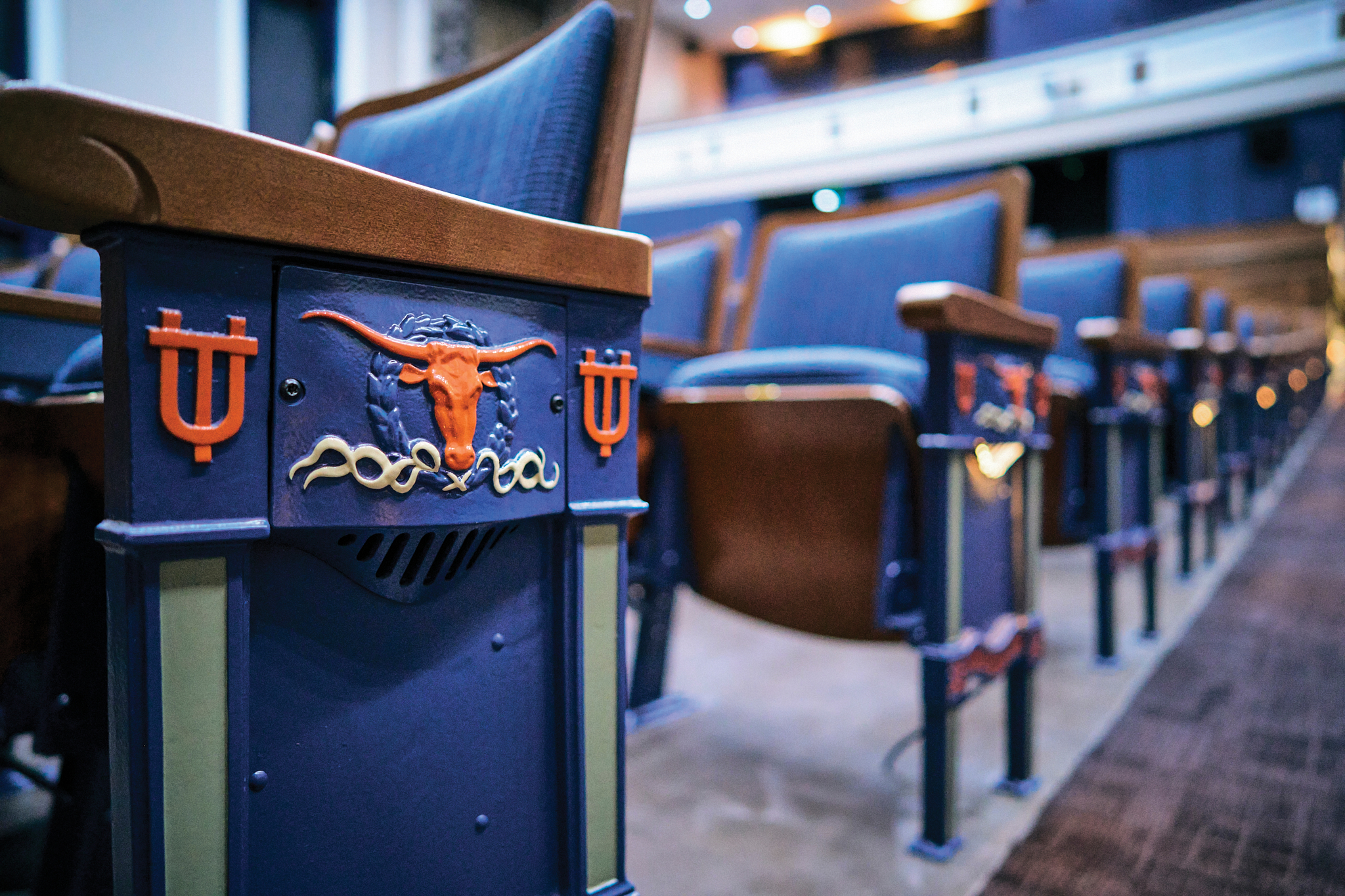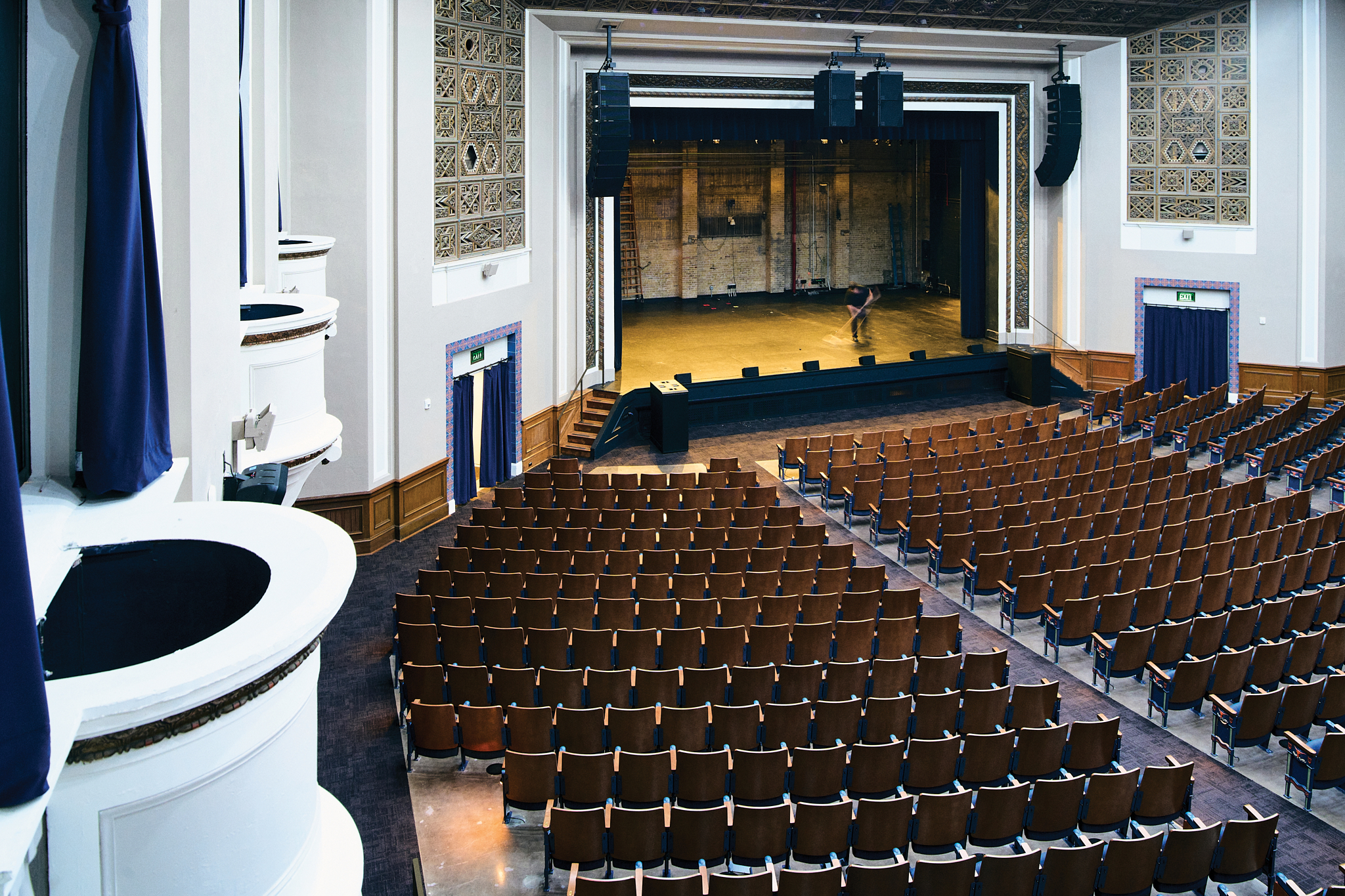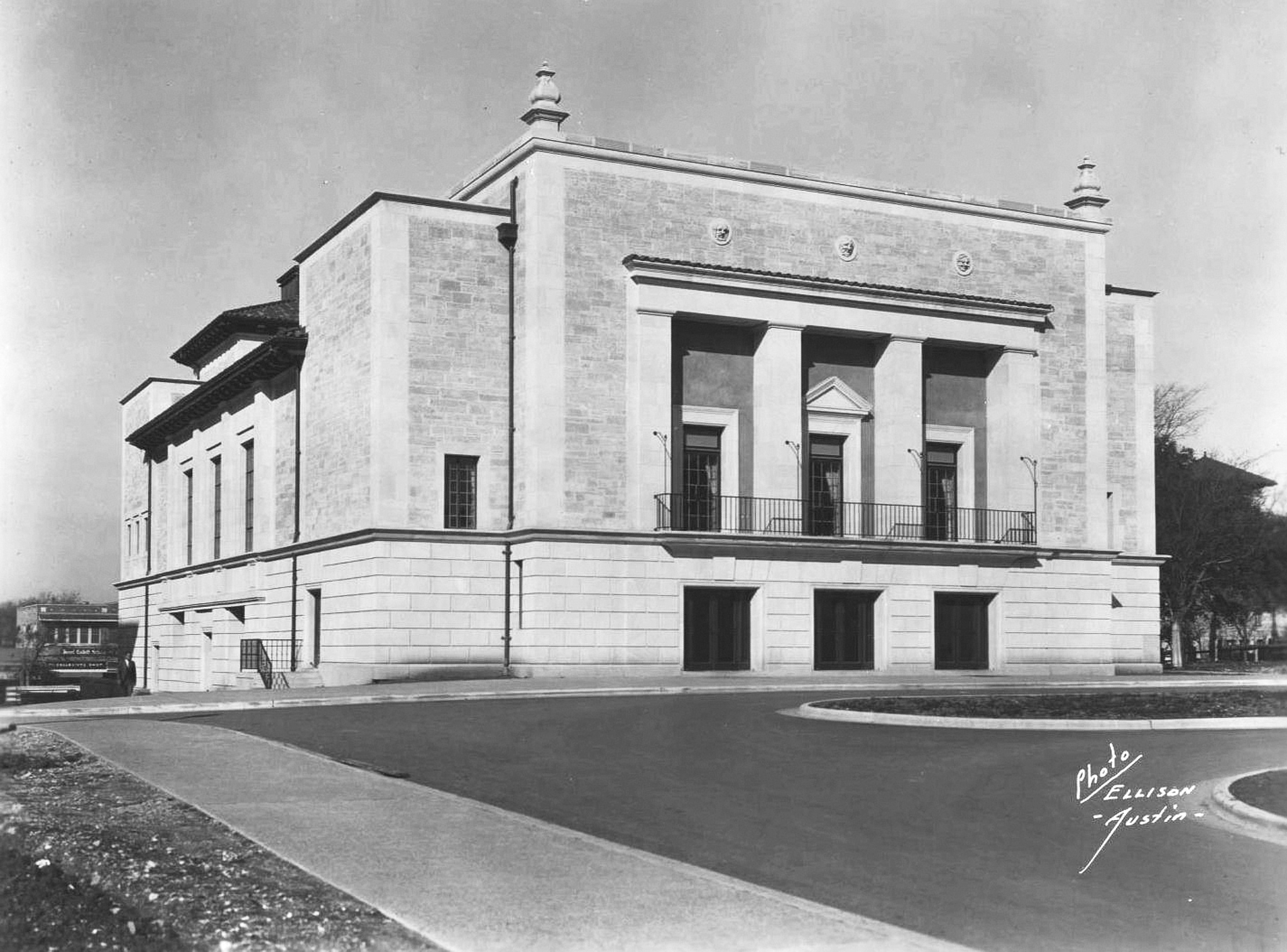Hogg Memorial Auditorium Undergoes Exciting Renovations

Not many 90-year-olds look this good. In fact, Hogg Memorial Auditorium has never looked better. After a two-year, $27.8 million renovation, the first auditorium at The University of Texas at Austin has reopened and is already reclaiming its role as a lively hub of student activity.
Historically, Hogg has bookended the student experience, hosting hundreds of freshman orientation sessions as well as graduation ceremonies for many departments. In between, glee clubs, step shows, and other student productions filled the hall. Many a final exam was administered there as well—all of which Mulu Ferede, executive director of University Unions, says will resume.

Situated on the west edge of campus and holding 1,007 seats, the elegant, Beaux-Arts-style venue fills a unique niche—larger than Bates Recital Hall (700 seats) but smaller than Bass Concert Hall (2,900 seats). But more importantly, because Hogg is overseen by University Unions, a department in the Division of Student Affairs, it is tightly focused on the student experience and student organizations, as distinguished from large-scale shows brought in for the public.
“It’s very emotional for me,” says Soncia Reagins-Lilly, UT’s vice president for student affairs and dean of students, who oversaw its decade-long climb back from disrepair and declining use. “It’s such a great opportunity to bring such a historic facility back into student life. Every time I go in there, I’m near tears. I’m extremely happy to be part of that legacy and that return.”
That emotion is echoed by UT President Jay Hartzell, PhD ’98, Life Member. “UT students have been entertained, challenged, inspired, and educated by events at Hogg Memorial Auditorium for nearly a century,” Hartzell says. “This renovation brings a key part of campus life back to where it belongs, while we continue to invest in the vibrancy of our campus and its contributions to Austin’s arts and music culture.”




Hogg Memorial Auditorium commemorates Gov. Jim Hogg and his son, Will C. Hogg, an early Regent and pivotal figure in University history who died in 1930. Designed by French-born architect Paul Cret and completed in 1933, it stood four years before Cret’s most famous campus building, the Tower, was built.
For more than 40 years, Hogg was an unsurpassed performance venue in Austin, and it was not eclipsed on campus until the performing arts complex anchored by Bass Concert Hall opened in 1981. The Hogg stage has hosted thousands of events such as speeches, lectures, and professional performances, including plays, concert pianists, string quartets, and full symphony orchestras. John Legend played there in 2012.
For many years, Hogg was also used for film screenings. When independent journalist Max Raskin recently asked Wes Anderson, BA ’90, which movie theater he had been to the most in his life, Anderson replied that since he had been a projectionist at Hogg Auditorium, “that may be the one where I have spent the most time. It’s a big room.” In 1997, it reopened as a performing arts venue under the College of Fine Arts.
In 2011, Ashley Baker Hayes, BA, BS ’13, became vice president of Student Government. Hayes had been hearing from student organizations that it was very difficult to secure spaces on campus and had simultaneously noticed that Hogg was basically mothballed. She came to Reagins-Lilly and asked why.
Reagins-Lilly met with then-Fine Arts Dean Doug Dempster and discussed how the location was ideal for students—adjacent to the Texas Union on the West Mall and near West Campus. Dempster agreed to repatriate it to the Division of Student Affairs during the 2011–12 school year.
“Whenever you’re in student leadership, you’re always looking for different things to fix on campus, looking to improve the student experience,” says Hayes, who now works in government affairs at Charter Communications. “You might not see the change while you’re on the Forty Acres, but it’s exciting to know that more than 10 years later, something that I had a small hand in is able to really help students moving forward.”
But even in the dimmer light of predominantly student use, by 2020 the building’s deterioration could no longer be tolerated.
Claudette Campbell, BA ’83, Life Member, is director of operations for the Texas Union and Hogg. For years the fire marshal would take Campbell’s earnest word that they were about to renovate and would clear it to be open another year, but “I think at some point we would have been shut down,” she says.
Finally, after removing the seats to allow Brené Brown, BSW ’95, Life Member, to build a set and film her Atlas of the Heart series in the auditorium in 2021, Hogg was closed.

“When you do a renovation project of historical significance, it’s tough,” Ferede says. “I think specifically for this building, the electrical—the part you don’t see—was really the most challenging. It also happened to coincide with the pandemic, and so there were numerous supply chain issues.”
A completely new $7 million electrical system replaced dilapidated electrical switch gears and generators. A new roof cost another $7 million.
New ornamental woodwork replaced peeling paint in the lobby and was inspired by the geometric shapes of the original carved plaster surrounding the stage. In the auditorium proper, visitors are greeted by new seats, replicas of the originals—now blue instead of green to match a new color scheme designers felt was truer to the 1930s, and with replicas of the decorative steel plates that used to adorn the aisle seats.
The auditorium’s large windows now can be darkened for performances or movies by lowering motorized shades or raising them when more daylight is desired, revealing the historic Battle Oaks. Energy-saving and other measures have brought the building so far that it has been submitted for LEED (Leadership in Energy and Environmental Design) certification, a difficult designation for old buildings to achieve.
There is cinema-quality digital projection in the projection room above the balcony for the Wes Andersons of tomorrow and a new front-of-house mixing board at the back of the main seating level. The auditorium is completely set up for streaming as well.
“For a campus like UT Austin, whose slogan is ‘What starts here changes the world,’ it was kind of a shame that this was the facility we were operating … Now we’re the best you can be in terms of technology and amenities for a world-class institution,” says James Buckley, director of facilities and operations of the University Unions.

“Hogg is really supposed to reflect the spirit of Austin: live music,” Ferede says. The first performance at the restored auditorium was a concert for UT students and invited guests featuring blues-rock musician and Austin-native Gary Clark Jr. in October.
After 10 years, Reagins-Lilly looks forward to students creating new memories in Hogg. “It will be a premier center of student life, designed for the arts, designed to showcase all of our students and their talents,” she says. “I hope it’s a beacon of belonging, for students to say, ‘I belong here. That’s a space for me to experience and to learn.’”
CREDITS: Matt Wright-Steel (4); courtesy of UT's Briscoe Center for American History; Matt Wright-Steel; courtesy of University Unions, Grace Xu






